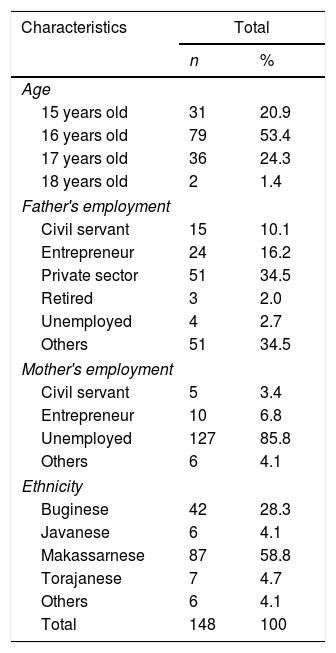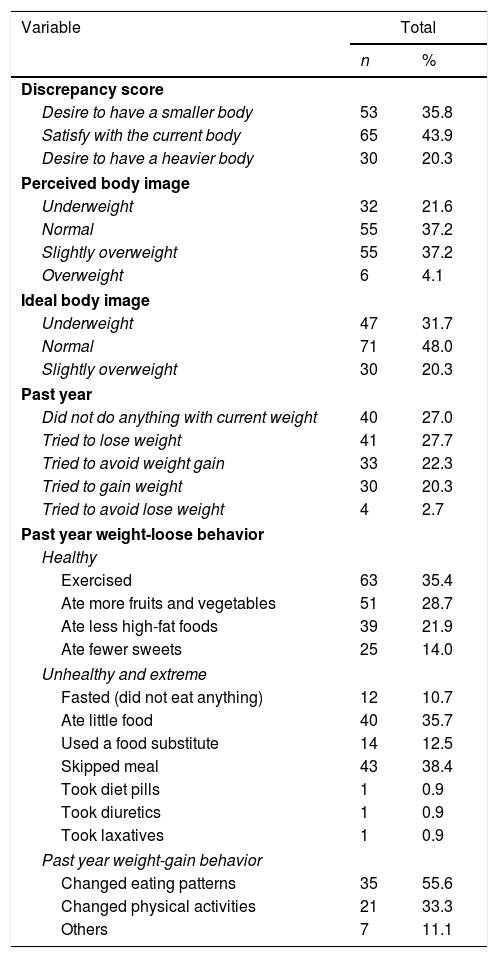This study was aimed to describe the body image and weight-control behavior among adolescent girls with low-mid socioeconomic background.
MethodsA cross-sectional study with 148 adolescent girls from low-rank public senior high school were conducted. Figure Rating Scale was used to measure body image, and a self-administered questionnaire was distributed to collect information on weight-control behavior. Data then analyzed descriptively.
ResultsIt was found that 56.1% of the respondents have negative body image, in which 35.8% of respondents desired to have a smaller body, and 20.3% of respondents desired to have a heavier body. The majority of respondents were ever tried to lose and avoid weight gain (50%) or gain and avoid weight loss (23.0%). The most frequent healthy weight loose behavior performed by respondents were exercised and ate more fruits and vegetables. Moreover, the most frequent unhealthy weight loos behavior has skipped the meal and ate little food. In addition, some of the respondents were tried to gain weight by changing eating patterns, physical activity, and use supplementation.
ConclusionsBody dissatisfaction is prominent among adolescent girls with low-mid socioeconomic background. The form of dissatisfaction is not limited to the desire to be thinner but also the desire to look heavier. Further intervention is needed to build positive body image and promote healthy eating behavior among adolescent girls from the low-mid socioeconomic background.
Artículo
Comprando el artículo el PDF del mismo podrá ser descargado
Precio 19,34 €
Comprar ahora








